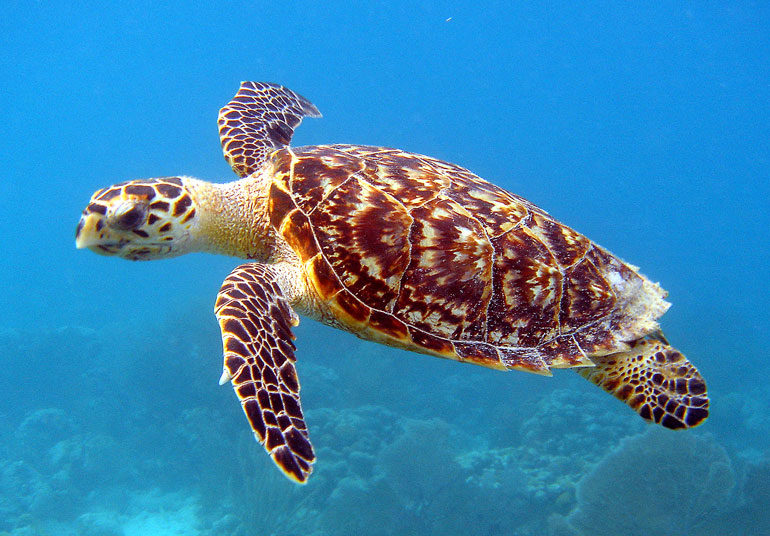Alexandra Phelps
Two National Geographic explorers have discovered the world’s first biofluorescent reptile, a Hawksbill turtle, in the Solomon Islands, located in the Pacific Ocean north-east of Australia.
But scientists are concerned the turtle may not be around for long as it is critically endangered.
The reptile has the ability to glow because of a natural process called biofluorescence, which is the ability for a organism to absorb one colour and emit another.
Marine biologist David Gruber, whose based in New York, was one of the two explorers and captured the turtle on camera. Gruber set out to film biofluorescent sharks when he came across the turtle.
He told Humber News on Thursday about this discovery will open new marine science research opportunities.
“We are now starting to look at other turtles to see if they also glow,” said Gruber, citing the loggerhead turtle as an example.
Other biofluorescent sea creatures include invertebrates such as jellyfish, shrimp and corals.
Jellyfish, for instance, produce fluorescent proteins that are very different in each creature, said Gruber.
“We have never seen anything like this before,” said Gruber.
He still doesn’t know how the turtles use their glowing ability in the wild.
“We have been going to aquariums to look at other turtles and to learn more about them and their sight.”
Lauren Crawshaw from Kawartha Turtle Trauma Centre said people don’t realize how vulnerable the reptiles are.
“They are at risk and are a unique species to work with,” said Crawshaw whose centre is based in Peterborough, Ont.
She explained that turtles are one of the fastest disappearing species because they reproduce at low rates.
The Kawartha Turtle Trauma Centre works to rehabilitate injured and sick turtles to release back into the wild said Crawshaw.
“It takes about 25 years to populate and produce one fully grown male turtle,” said Crawshaw.
However, there are still many questions to be answered.
“There is a lot of opportunities for research and discovery,” added Gruber.

